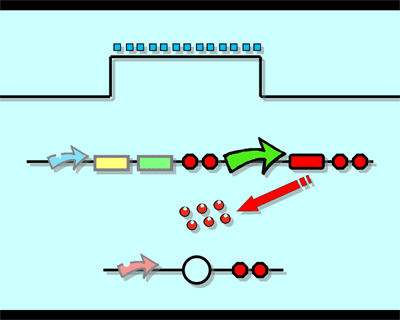Tianjin/FLIP-FLOP
From 2007.igem.org
(Difference between revisions)
Sunlovedie (Talk | contribs) |
Sunlovedie (Talk | contribs) |
||
| Line 21: | Line 21: | ||
<font size="3" color="#0000CC">2.<font size="3" color="#0000CC">Model Result</font> | <font size="3" color="#0000CC">2.<font size="3" color="#0000CC">Model Result</font> | ||
| + | <font size="3" color="#0000CC">2.1<font>[[Tianjin/FLIP-FLOP/model1|<font size="3" color="#0000CC">Model of the whole system</font>]] | ||
| + | |||
|- | |- | ||
|width="960px" style="padding: 10px; background-color: #00CC00" | | |width="960px" style="padding: 10px; background-color: #00CC00" | | ||
==Experiment== | ==Experiment== | ||
Revision as of 09:02, 25 October 2007
Design"Flip-flop" is the common name given to two-state devices which offer basic memory for sequential logic operations. Flip-flops are widely used for digital data storage and transfer as well as in banks called "registers" for the storage of binary numerical data. Based on the conception of "Flip-flop" and synthetic biology, we designed the Genetically RS FLIP-FLOP whose output signal is regulated by additional input signal. Besides this, we modulate the performance of Genetically RS FLIP-FLOP to optimize our original design. 1.Instruction of Logic Function
|
Modeling1.Construction of Mathematical Model 2.Model Result 2.1Model of the whole system |
|
==Experiment== |
